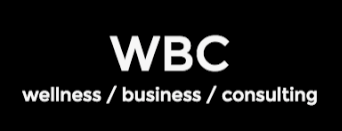Here’s Rachel Beider’s latest advice on this panel in Forbes. Original post published here
While not every day will be perfect in terms of motivation, if you discover your employees generally aren’t finding fulfillment or satisfaction in their work, it’s paramount you find a solution and help get them back to feeling their best as soon as possible. If you don’t, you risk your employees becoming burned out and unhappy, which could lead to them leaving your company in search of something more exciting.
To prevent your staff from reaching that point, you’ll need to take a few key actions both before and after you notice a problem. According to the members of Young Entrepreneur Council, taking the following seven steps could ensure employee morale stays high and your staff feel both motivated and fulfilled on a regular basis.
1. Nurture Open Communication
The best way to help an employee maximize their potential in any company is to have open communication. When an employee feels safe enough to express their concerns, the resolution is always positive. If they feel heard and understood, they will want to perform better and more efficiently. - Micky Klein, Micky Klein Interiors
2. Determine The Root Cause
If an employee is not finding fulfillment in their work, an honest discussion is in order to understand whether the dissatisfaction is related to the people they are working with, the tasks they are in charge of or how their job fits with their life. This conversation is often hard because honesty like that is uncomfortable for most people, but when done with genuine care and interest, the issue can either be resolved or the employee can be helped to move on gracefully to a company where they will be happier. - Vanessa Nornberg, Metal Mafia
3. Discover What Drives Them
As a leader, you must know your employees' satisfaction levels and ensure they find fulfillment in their work. One step to help employees who aren't feeling fulfilled is to talk with them about their goals and ambitions. By taking the time to understand what drives them, you can help them create a plan for achieving their goals, which will give them greater satisfaction in their current role. This approach will benefit the employee and have positive implications for the business, as they will be more motivated and productive. - Kristin Kimberly Marquet, Marquet Media, LLC
4. Check In Frequently
Having a conversation is the best first step; however, the important piece is when this conversation occurs. If the dissatisfaction in their work has gone undetected for a year, then chances are a conversation may not fix the issue. To combat this, I check in with my team quarterly with pointed questions about their workload, their satisfaction in their work and their wants and goals. This helps catch any negative feelings early on, which can typically be resolved with simpler solutions. - Leila Lewis, Be Inspired PR
5. Announce A New Leave Policy
Sometimes, taking a short break from work solves a lot of problems for you; however, most employees are reluctant to ask for leaves. There can be multiple reasons for it, but the one that stands out among them all is that employees don't want their employers to doubt their commitment or dedication to work. So, if you really want to lift up the morale at the workplace and increase employee satisfaction, try announcing a leave policy with no cap. Tell your employees that they are allowed to take as many leaves as they want as long as they're keeping up with the assigned deliverables and helping the company to keep the needle moving. The sense of liberation this kind of policy brings is truly revolutionary and would help you achieve desired employee satisfaction levels in no time. - Stephanie Wells, Formidable Forms
6. Take Their 'Dislikes' Off Their Plate
It's important to get to know your employees and what motivates them in general. Ask them questions about what they think an ideal workplace or role would be. There is an Entrepreneurial Operating System (EOS) tool that helps you identify what you love to do, what you like to do, what you don’t like to do but that is important to the company and what you just absolutely hate to do. Ideally, you talk to the employee and find out all the things they love to do and have them do more of those things. Anything on their “dislike” or “hate” list, try to delegate to someone at a lower level, automate it or eventually try to get these tasks off the person's plate. Once you find out what motivates them and what keeps them happy in their day-to-day role, it should be easy to keep them retained. - Jennifer A Barnes, Optima Office, Inc.
7. Show You Care About Their Happiness
I start by having an open and honest conversation with them and asking what they are looking for in their role and what kind of work they find most fulfilling and satisfying. This will help me better understand what they need to feel purposeful and motivated in their job. This kind of open dialogue will not only provide the employee with an opportunity to express themselves, but it will also show them that I care about their happiness and well-being. It also allows me to provide the necessary resources, guidance and support to help them feel more fulfilled and satisfied in their work. This could lead to improved morale and productivity, which would benefit the employee and the organization as a whole. - Rachel Beider, PRESS Modern Massage










